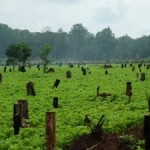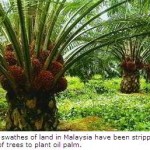
Jacksonville, Florida – To protect the eggs of endangered sea turtles from the ongoing oil spill in the Gulf of Mexico, U.S. and Florida wildlife experts are planning to relocate them in an unprecedented operation. The plan is to move developing eggs from some 780 nests away from where they were originally laid on Florida Panhandle and Alabama beaches to a location on the Atlantic coast of Florida far from the oily waters.
“Permitted nest surveyors have been in the field locating and marking nests daily since the start of the nesting season,” said Sandy MacPherson, National Sea Turtle Coordinator with the U.S. Fish and Wildlife Service. “Data on the nest location and the date deposited are being closely tracked. This allows us certainty in timing the nest collection phase of the plan.”

Eggs will be allowed to incubate in their original nests for between 51 and 53 days. Then they will be collected by hand and individually packed in washed Styrofoam boxes with air holes lined with sand from the original nest. They will be transported by specially equipped ground transportation to designated airports. Each day’s collected nests will be air transported in a single aircraft to the Atlantic Coast of Florida. There, in a secure, climate-controlled location, the eggs will complete their incubation.
“As hatchlings emerge they will be released on east central Florida beaches where they will be allowed to make their way to the ocean,” said Barbara Schroeder, NOAA Fisheries National Sea Turtle Coordinator.
If left to hatch on their own without relocation, the turtle hatchlings would have to navigate the oil that has been spilling into the Gulf since April 20 from the broken Deepwater Horizon wellhead. That oil has now reached the shores of Alabama and the Florida panhandle.
“In developing this plan, we realized early on that our expectations for success needed to be realistic,” said MacPherson. “On the one hand, the activities identified in the protocols are extraordinary and would never be supportable under normal conditions. However, taking no action would likely result in the loss of all of this year’s northern Gulf of Mexico hatchlings.”
She said that wildlife officials do not intend to implement these protocols elsewhere or in future years in this area.
Most of the nests are laid by loggerhead turtles; however, some Kemp’s ridley, green, and leatherback turtle nests have also been documented. Hatchlings begin emerging from nests in early to mid-July.
In 2010, about 50,000 hatchlings are expected to emerge from Northern Gulf sea turtle nests.
Oil spill impacts to nests laid along the southwest Florida beaches are not likely to result in the loss of the entire 2010 hatchling cohort, according to Robbin Trindell with the Imperiled Species Management Branch of Florida Fish and Wildlife Conservation Commission.
“The loggerhead turtles produced on Southwest Florida beaches are part of a larger sub-population that also nests on Florida’s Atlantic Coast beaches,” Trindell explained. “The likelihood that all or a significant portion of this 2010 cohort would be lost is highly improbable.”
The Fish and Wildlife Service reports that 583 sea turtles have been collected either dead or sick along the U.S. Gulf Coast as of June 29. Of these, 111 were visibly oiled, 126 were not, and the status of 346 is still pending.
All sea turtles are listed as either threatened or endangered under the Endangered Species Act. Five of the seven species swim in Gulf of Mexico waters – green, hawksbill, Kemp’s ridley, leatherback and loggerhead turtles.
To report injured or dead wildlife in the impact area call: 1-866-557-1401. Individuals are asked not to attempt to help injured or oiled sea turtles, but to report the sightings to the toll-free number.
Source: Environment News Service (ENS) News Release dated June 30, 2010.














